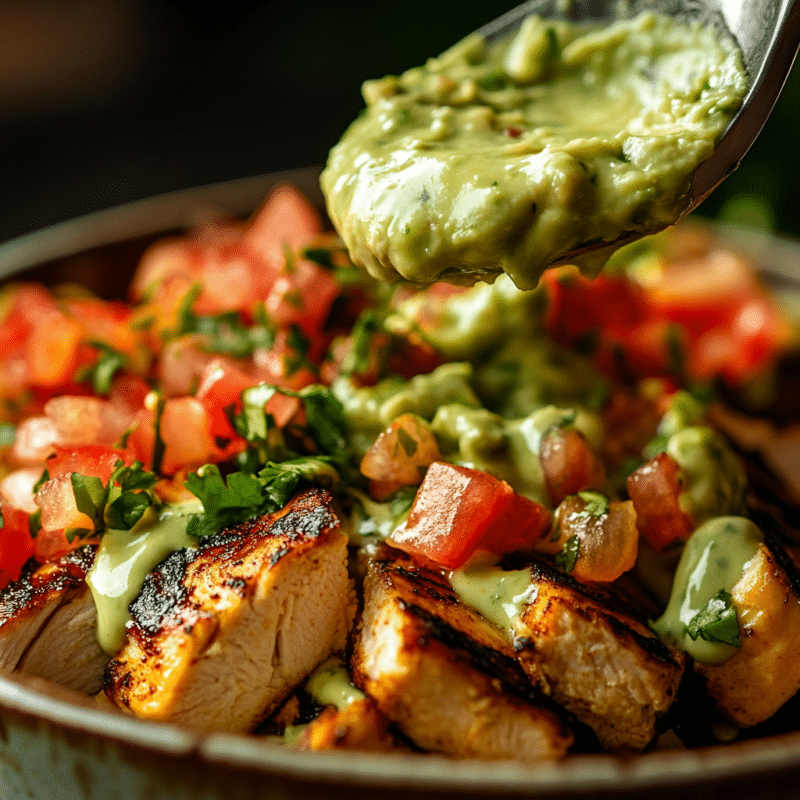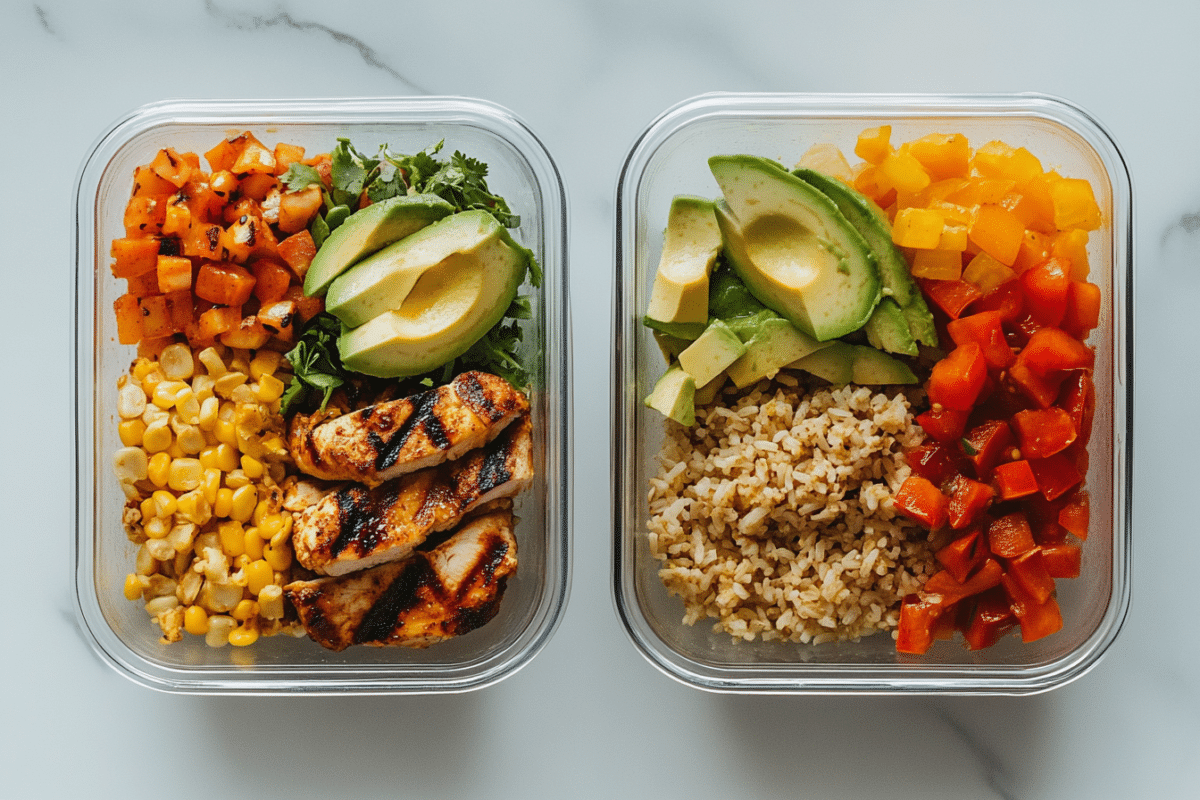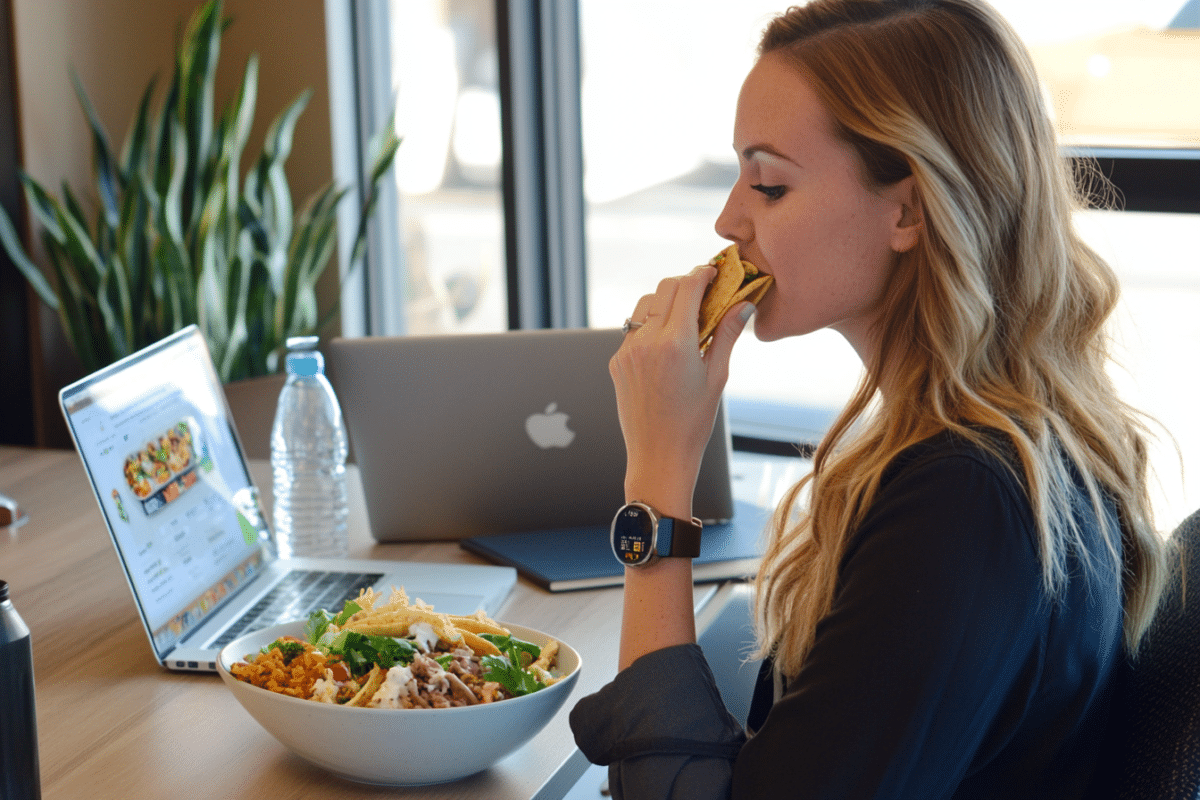There’s a quiet revolution happening in drive-thrus across America. It’s not loud like the return of a cult-favorite taco or a new dessert gimmick—it’s subtle, slow, but powerful. And it’s happening in a bowl.
I remember pulling into a Taco Bell after a long shift, craving something warm and filling. For years, my go-to had been a Cheesy Gordita Crunch or a Beef Chalupa. But this time, something different caught my eye on the screen: the Taco Bell Power Bowl. A mix of grilled chicken, rice, beans, avocado, and greens—words I wasn’t used to associating with fast food. I ordered it. And that first bite felt like I was eating a new kind of Taco Bell.
Beyond just a menu item, the Power Bowl symbolizes something bigger: a shift in how we eat and how we define “healthy” in our daily rush. It blends fast-food convenience with the clean-eating movement—without the price tag or prep time of boutique salad bars. But more than that, it speaks to a cultural craving for food that fuels, not just fills.
In this post, we’re not just going to break down what’s in the Power Bowl or whether it’s good for you (though we’ll cover that too). We’re going to go deeper—into how Taco Bell’s Power Bowl fits into the rise of functional fast food, how it’s become the brand’s sleeper health hero, and how you can recreate or even elevate it at home.
Let’s dive into the bowl that’s quietly reshaping what we expect from a quick meal.
What Comes in Taco Bell’s Power Bowl?

More Than a Pile of Ingredients—It’s a Carefully Crafted Structure
The Taco Bell Power Bowl may look like a random toss of ingredients, but it’s engineered for balance—nutritional and culinary. Here’s what you’ll find in the classic Chicken Power Bowl, straight from the menu:
- Grilled chicken (tender and lightly seasoned)
- Seasoned rice (a spiced, slightly oily base layer)
- Black beans (fiber-packed and earthy)
- Crisp romaine lettuce
- Pico de gallo (fresh salsa made with diced tomatoes and onions)
- Guacamole (creamy, with a lime-kissed brightness)
- Avocado ranch dressing (smooth and tangy)
- Reduced-fat sour cream
- Shredded cheddar cheese
At first glance, it’s a fusion between a burrito bowl and a protein salad. But here’s what no one’s saying: it’s one of the only fast-food menu items built like a “macro bowl”—a concept usually reserved for health cafés and fitness plans. Every item serves a purpose. Protein, carbs, fats, fiber, and freshness—just like you’d plan in a high-performance meal.
A Strategic Flavor Map
When you stir it all together? You’re not just getting taste—you’re getting texture layering. Crunchy lettuce, creamy avocado, juicy grilled chicken, fluffy rice, zesty pico. The Power Bowl isn’t just about health, it’s about mouthfeel harmony, which is why people keep coming back to it—even when they could’ve chosen a burrito.
Pro Tip: Ask for the dressing on the side if you want more control over the richness. You’ll still get all the flavor, but with less unnecessary fat.
👉 Looking for a fresh homemade take on this? Check out our Costco Mediterranean Salad recipe for a clean alternative packed with fiber and flavor.
Is the Taco Bell Power Bowl Really Healthy?
The Illusion of Health: When Fast Food Dresses Up
At face value, the Taco Bell Power Bowl checks all the right boxes: grilled lean protein, legumes, healthy fats, no fried shell in sight. But here’s what most nutrition blogs don’t tell you—you can dress anything up to look clean.
The truth? While it’s light-years better than a Crunchwrap Supreme, the Power Bowl isn’t immune to fast-food pitfalls like sodium overload, sneaky sugars, and ultra-processed sauces.
Let’s look at the numbers for the Chicken Power Bowl:
| Nutrition Info | Per Serving |
|---|---|
| Calories | ~470 kcal |
| Protein | 26 g |
| Total Fat | 18 g |
| Carbohydrates | 50 g |
| Fiber | 9 g |
| Sodium | 1,200 mg (≈52% DV) |
Yes, it offers solid protein and fiber. But that sodium? That’s more than half your daily limit in one bowl. And that creamy ranch sauce? It’s not just for taste—it adds saturated fat that doesn’t show up unless you look for it.
Functional, Yes. Perfect, No.
Still, there’s a deeper story here. The Power Bowl represents something new in fast food: functionally balanced meals built for energy, not just indulgence. It mimics “clean eating” principles without preaching.
But don’t confuse it for a diet food. Think of it as a gateway meal—a bridge between classic Taco Bell cravings and more intentional eating. It’s a “maybe-I’ll-go-to-the-gym-today” bowl. It’s fast food for people trying to do better, but not ready to meal-prep tofu and chickpeas every Sunday.
The Untold Opportunity
Here’s something no competitor has said: this bowl has the potential to evolve into a fully functional meal if Taco Bell committed to:
- Reducing sodium by reworking the sauces
- Offering quinoa or whole-grain rice options
- Adding more greens beyond the shredded iceberg mix
If Taco Bell ever makes that move, the Power Bowl won’t just be the healthiest thing on their menu—it might become the healthiest thing in the fast-food industry.
👉 Want a truly clean and high-protein option? Try our Lemon Butter Salmon with Broccoli that rivals any drive-thru.
Table of contents
Taste & Texture: Why the Power Bowl Hits Different
It’s Not Just Flavor—It’s Food Psychology at Work
I’ll be honest—when I first tried the Taco Bell Power Bowl, I wasn’t expecting fireworks. Fast food bowls are usually mushy, rushed, and flat. But this one? It hit with layers. Every bite had contrast—warm chicken, cold lettuce, spicy pico, creamy guac. And that’s the real secret here: the Power Bowl is designed for mouthfeel satisfaction, not just calories.
See, we’re not just creatures of taste—we crave texture variety. Crunch + cream + chew = crave loop. And Taco Bell nails that balance without you even realizing it.
The Flavor Equation They Don’t Advertise
Here’s the unspoken sauce formula:
- Umami from grilled chicken
- Acidity from lime in the guac
- Cool creaminess from the sour cream and ranch
- Heat from optional jalapeños or sauce packs
- Carb satisfaction from the seasoned rice
None of that is written on the menu. But your brain knows. It’s the reason you feel satisfied longer—even if it’s “just a bowl.”
The Comfort Factor: Warm Bowl, Cold Lettuce
There’s also something primal about the hot + cold contrast. Warm rice and beans at the bottom, topped with chilled veggies and creamy sauce—it tricks your brain into thinking the meal was just made for you, even if it came from a microwave line.
It’s that tiny sensory win that turns a healthy option into a comfort ritual. One you start looking forward to.
👉 Craving layers like that at home? Try our Mediterranean Cucumber & Tomato Salad for the same refreshing-crunch magic, minus the drive-thru guilt.
Homemade Power Bowl vs. Taco Bell’s Version
Fast Food Wins on Convenience—but Loses on Control

There’s a reason Taco Bell’s Power Bowl exists: you’re hungry, you’re tired, and you don’t have time to chop lettuce at 7 p.m. The Power Bowl gives you something fast, semi-healthy, and satisfying. No prep, no dishes, no decisions.
But here’s the trade-off: you give up control. You don’t get to pick where the chicken came from. You don’t know how much oil is in that rice. You can’t adjust the guac’s lime level or choose a different grain.
That’s where homemade Power Bowls crush it.
Make It Once, Eat All Week
Picture this: Sunday afternoon. You cook a big batch of brown rice, grill some chicken thighs with cumin and paprika, whip up a fresh guac, and chop crunchy romaine. In 45 minutes, you’ve got enough bowls for four days—and they taste better than the drive-thru version.
It’s what dietitians call batch cooking, and it’s not just for the ultra-disciplined. With one solid prep session, you get:
- Higher protein content
- Less sodium and fat
- Better quality oils
- Real veggies (not just lettuce shreds)
- Actual avocado, not shelf-stable paste
And don’t underestimate the cost cut. One Taco Bell Power Bowl is $8–$10 depending on your area. A homemade version? Around $2.50 per serving—and that’s if you go all in on organic chicken and fresh lime.
| Taco Bell Bowl | Homemade Bowl |
|---|---|
| $8.49 per bowl | ~$2.50 per bowl |
| Pre-cooked chicken | Fresh grilled meat |
| Processed dressings | Homemade sauces |
| High sodium | Sodium controlled |
| No ingredient swaps | Fully customizable |
Bonus: You Get Your Taste Back
Most people don’t realize how numbed their taste buds get from processed sauces. Try making your own bowl with just lemon juice, olive oil, cumin, and sea salt. The brightness hits different. It wakes your palate up.
👉 Don’t miss our full guide on clean and comforting meal prep like this Salmon & Roasted Veggie Bowl—ready in 30 minutes, just like Taco Bell, only better.
FAQ: Taco Bell Power Bowl — Your Top Questions Answered
The Taco Bell Power Bowl includes:
Grilled chicken (or your chosen protein)
Seasoned rice
Black beans
Romaine lettuce
Guacamole
Pico de gallo
Shredded cheddar cheese
Reduced-fat sour cream
Avocado ranch dressing
This combo forms a layered bowl that blends macros and textures—protein, fiber, carbs, healthy fats—all in one meal. It’s structured like a “macro bowl,” something usually reserved for boutique cafés or health-forward chains. That’s why it’s resonating even outside the fast-food crowd.
What’s layered on top of the rice and beans base includes:
Lettuce (for crunch)
Guac (for healthy fat)
Pico de gallo (for brightness)
Cheese (for salt and creaminess)
Sour cream (for tang)
Avocado ranch (for indulgent richness)
This top layer isn’t just for flavor—it’s built to balance mouthfeel. The real goal? Keep you full, satisfied, and coming back.
Fun fact: Taco Bell intentionally layers hot and cold ingredients to create contrast—that’s a psychological trick to enhance perceived quality.
Compared to most fast-food items? Absolutely. It’s rich in:
Protein (≈26g)
Fiber (9g)
Healthy fats (avocado)
Complex carbs (beans + rice)
But… it’s not perfect. Here’s what you should watch:
The avocado ranch + sour cream combo adds unnecessary saturated fat.
Sodium is high—over 1,200mg per bowl.
The bowl’s health rating depends on your swaps. Remove the dressing, reduce cheese, double the lettuce? You’ve got yourself a fitness-friendly lunch.
In the UK, Taco Bell’s refill policy isn’t standardized. Some locations offer free soft drink refills; others don’t. It largely depends on individual franchise policies.
Pro tip if you’re dining in the UK: ask before ordering, especially if you’re expecting unlimited drinks like in U.S. branches. It’s a detail that catches many visitors by surprise.
Final Thoughts: Is the Taco Bell Power Bowl Worth It?

If you’ve made it this far, you already know the answer isn’t black and white. The Taco Bell Menu Power Bowl is more than just a healthier fast-food pick—it’s a signal that quick meals don’t have to sacrifice substance.
It’s not flawless. But it’s flexible. It’s not ultra-clean. But it’s close enough for real life.
The Power Bowl stands at a crossroads: between flavor and function, between convenience and control. Whether you grab it on a rushed Tuesday or batch-prep your own version at home, this bowl is proof that balance is possible—even from a drive-thru window.
And hey, if it inspires you to rethink your lunch options or finally start that Sunday meal prep? Then it’s doing more than feeding you—it’s nudging you toward better habits.
👉 Looking for more wholesome, beautiful bowl ideas?
Follow our fresh takes and visual recipes on Pinterest: Cuisinecrafted Pinterest Board
👉 Need more Mediterranean inspiration? Don’t miss our Cucumber & Tomato Salad—perfect for a DIY Power Bowl side dish.

Taco Bell Menu Power Bowl: The Fast-Food Bowl That’s Redefining Health on the Go
Equipment
- 1 Non-stick skillet For cooking chicken
- 1 Small saucepan For rice
- 1 Mixing Bowl For guacamole
- 1 Sharp knife For slicing vegetables
Ingredients
Bowl Base
- Amount Unit Name Notes
- 2 cups cooked white rice Or substitute brown rice
- 1 cup black beans Drained and rinsed
- 2 tbsp olive oil For grilling
Chicken
- Amount Unit Name Notes
- 2 chicken breasts Thinly sliced
- 1 tsp chili powder Or taco seasoning
- 1 tsp garlic powder
Toppings
- Amount Unit Name Notes
- 1 cup romaine lettuce Finely chopped
- ½ cup pico de gallo Fresh or store-bought
- ½ cup shredded cheddar Reduced-fat if preferred
- ½ cup sour cream Or Greek yogurt
- ½ cup guacamole Homemade or store-bought
- ¼ cup avocado ranch Optional
Instructions
- Cook the chicken: Season sliced chicken with chili powder, garlic powder, salt, and pepper. Heat olive oil in skillet and grill chicken over medium heat for 6–8 minutes or until fully cooked. Set aside to rest.
- Prepare the rice and beans: Cook white rice according to package instructions. Heat black beans in a small saucepan over low heat for 2–3 minutes.
- Assemble the guacamole (optional if not using store-bought): In a bowl, mash 1 avocado with lime juice, chopped red onion, and a pinch of salt.
- Layer the bowl: Start with rice and black beans. Add sliced chicken on top. Then, layer with lettuce, pico de gallo, shredded cheese, sour cream, guacamole, and avocado ranch if desired.
- Serve and enjoy: Sprinkle with fresh cilantro or lime wedges if available.
Notes
Nutrition (Per Serving)
- Calories: 470 kcal
- Protein: 26g
- Carbohydrates: 50g
- Fat: 18g
- Fiber: 9g
- Sodium: ~1200mg

1 thought on “Taco Bell Menu Power Bowl: The Fast-Food Bowl That’s Redefining Health on the Go”